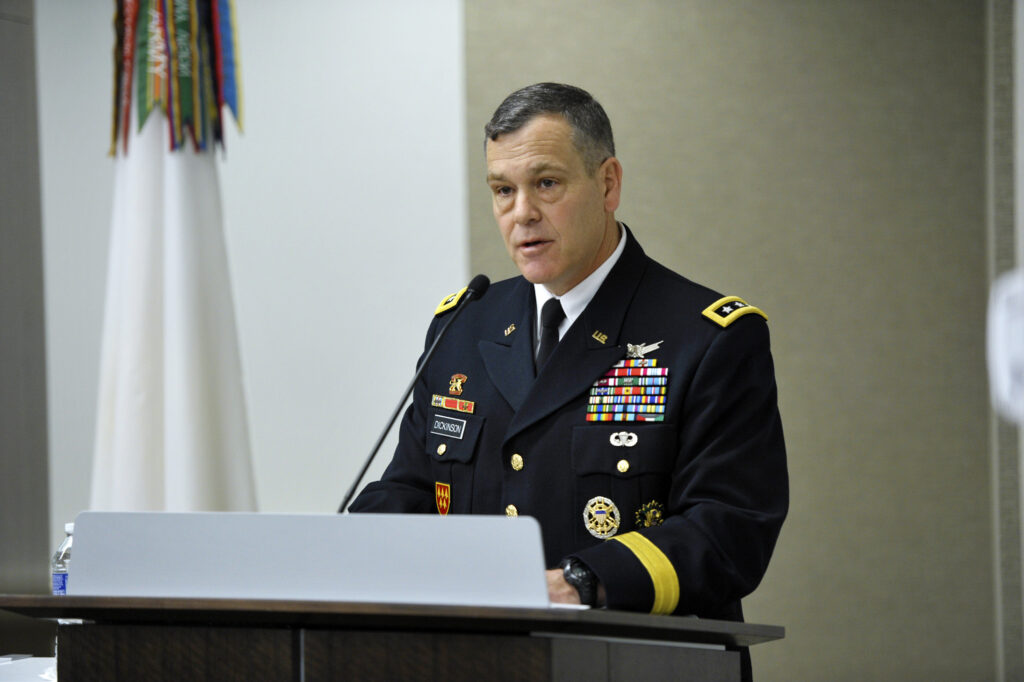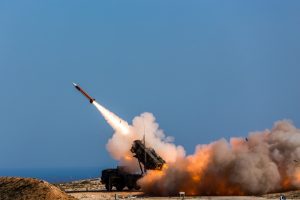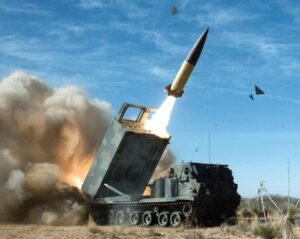Inside Army Futures Command: CFT Chiefs Take Charge
Posted on
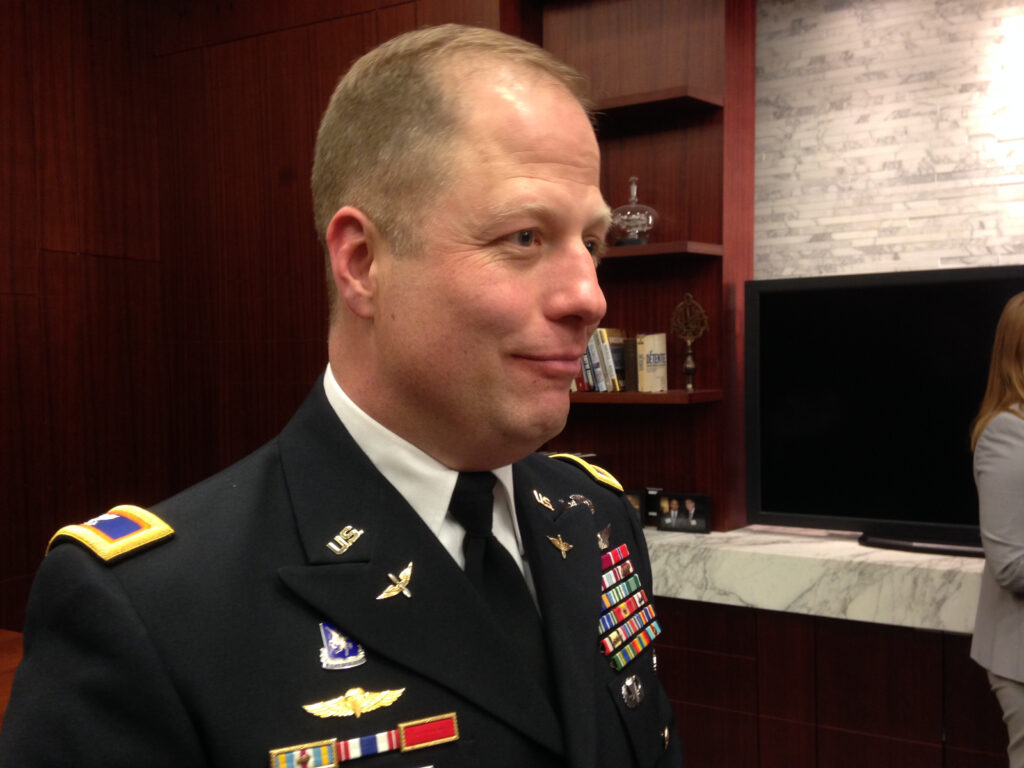
Then-Colonel Walter Rugen, who took over the newly created Future Vertical Lift Cross Functional Team in October and was promoted to brigadier general in January.
REDSTONE ARSENAL, HUNTSVILLE, ALA.: It took a minor miracle of scheduling for me to catch up with Wally Rugen in his half-furnished office here. The fast-moving helicopter pilot has been head of the Army’s aviation Cross Functional Team since December, a one-star general since January, and a full-time CFT chief just since July 8th, when he officially left his other job at the 7th Infantry Division and resettled here in Huntsville.
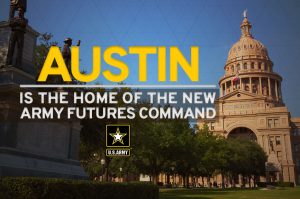 But Rugen’s been traveling so much to consult, cajole, or coerce so many pieces of the Army’s aviation community — west to 7ID HQ in Washington state; south to the aviation center on Fort Rucker, Ala.; north to the 101st Airborne on Fort Campbell, Ky.; east to the Pentagon; and more — that even his own media relations team sometimes seems to lose track.
But Rugen’s been traveling so much to consult, cajole, or coerce so many pieces of the Army’s aviation community — west to 7ID HQ in Washington state; south to the aviation center on Fort Rucker, Ala.; north to the 101st Airborne on Fort Campbell, Ky.; east to the Pentagon; and more — that even his own media relations team sometimes seems to lose track.
How Brig. Gen. Rugen has begun to settle down is a sign of how the Cross Functional Teams, created just last fall, are shifting from ad hoc pilot projects to full-time institutions — institutions which will be central to the new Army Futures Command now standing up in Austin. Four of the eight CFT directors have now shifted from “dual-hatted” status to working solely on their CFT, Army officials told me, while the other four are working towards the same transition.
Sidebar: The US Army’s Cross Functional Teams (CFTs)
Last fall, Army Chief of Staff Mark Milley created eight Cross Functional Teams to bring together expertise from across the Army bureaucracy to fix a sclerotic procurement system. Six of these CFTs correspond to Gen. Milley’s Big Six Modernization priorities, with long-range artillery and missiles as No. 1. There are also two “cross-cutting CFTs” specializing in highly technical areas to support the other six. All eight and their leadership are listed below with links to our coverage and official bios (where available).
CFT Director: Col. (promotable) John Rafferty (full time on CFT) [LinkedIn]
Senior Mentor: Gen. Robert Brown, commander, US Army Pacific (USARPAC) [official bio]
CFT Director: Brig. Gen. David Lesperance (also Commandant, Armor School) [official bio]
Senior Mentor: Gen. Robert Abrams, commander, Forces Command (FORSCOM) [official bio]
CFT Director: Brig. Gen. Walter Rugen (full time on CFT) [bio]
Senior Mentor: Gen. James McConville, Vice-Chief of Staff of the Army (VCSA) [official bio]
CFT Director: Maj. Gen. Peter Gallagher (full time on CFT) [official bio]
Senior Mentor: Lt. Gen. Bruce Crawford, Army Chief Information Officer & Deputy Chief of Staff for Information (CIO/G-6) [official bio]also mentored by Lt. Gen. Crawford:
Precision Navigation & Timing (PNT)
CFT Director: Mr. Willie Nelson (also Director of Programs & Technology at the Space & Missile Defense Command (SMDC) Technical Center) [profile]
- Air & Missile Defense (AMD)
CFT Director: Brig. Gen. Randall McIntire (full time on CFT) [bio]
Senior Mentor: Lt. Gen. James Dickinson, commander, Space & Missile Defense Command (SMDC) and Army Forces Strategic Command (ARSTRAT) [official bio]
CFT Director: Brig. Gen. Christopher Donahue (also Commandant, Army infantry school) [bio]
Senior Mentor: Gen. Stephen Townsend, commander, Training & Doctrine Command (TRADOC) [official bio]also mentored by Gen. Townsend:
Synthetic Training Environment (STE)
CFT Director: Maj. Gen. Maria Gervais (also deputy commander, Combined Arms Center) [official bio]
That doesn’t mean the CFTs are becoming big bureaucracies. “We were never above probably a total of eight people,” Rugen told me, though now they’ve settled in Huntsville they’re up to nine and growing. (The public affairs personnel who set up the interview and even drove me to and from the base, for example, were not CFT staff but PAOs for other Huntsville commands called in to help). “We’re not this big colossal thing. We’re a lean, mean organization.”
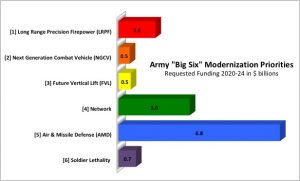 Nor are the CFTs trying to overhaul the entire procurement bureaucracy. Instead, the eight CFTs each has a focus area corresponding to one of the Army’s Big Six modernization priorities — long-range artillery, armored vehicles, aircraft, command networks, air & missile defense, and infantry, in that order — or to two cross-cutting technical issues, virtual reality training simulations and Precision Navigation & Timing without GPS. Within each portfolio, the CFTs work only on a handful of high-priority projects. “We’re not doing this for everything,” Rugen told me. “We’re doing this for the FVL (Future Vertical Lift) priorities for our strategic road map. It’s not for every requirement in Army aviation.”
Nor are the CFTs trying to overhaul the entire procurement bureaucracy. Instead, the eight CFTs each has a focus area corresponding to one of the Army’s Big Six modernization priorities — long-range artillery, armored vehicles, aircraft, command networks, air & missile defense, and infantry, in that order — or to two cross-cutting technical issues, virtual reality training simulations and Precision Navigation & Timing without GPS. Within each portfolio, the CFTs work only on a handful of high-priority projects. “We’re not doing this for everything,” Rugen told me. “We’re doing this for the FVL (Future Vertical Lift) priorities for our strategic road map. It’s not for every requirement in Army aviation.”
But these small, focused teams are plugged into Army leadership at the highest level. Rugen likes to say the CFTs cut “12 levels of bureaucracy down to four,” but that’s a little simplistic. Worst case, since the CFTs have few resources of their own and have to mobilize the existing bureaucracy to get anything done, they arguably add another a layer. But, best case, CFTs cut it down to just two degrees of separation. Collaborators from across the Army now have direct access to Rugen and his counterparts, and Rugen & co. have direct access to the Army’s top four: Secretary Mark Esper, Undersecretary Ryan McCarthy, Chief of Staff Gen. Mark Milley, and Vice-Chief Gen. James McConville — who, as the Army’s senior helicopter pilot, also happens to be Rugen’s “senior mentor.”
Mentors
The “Big Six” modernization teams each have an official mentor to smooth their path, a three-or-four-star general who advises the one-or-two-star Cross Functional Team chiefs and helps connect them to key constituencies. Among them are Brig. Gen. Randy McIntire, the head of the Air & Missile Defense CFT — the full-time head as of July, when he handed over command of the Air Defense Artillery school in Fort Sill, Okla. — and his senior mentor, Lt. Gen. James Dickinson, based here in Huntsville.
“Gen. Milley looks at me as the air senior defender in the Army, and I am, just by rank and being old,” Dickinson told me self-deprecatingly during the Space & Missile Defense Symposium. Air and missile defense is a fairly small community in the Army, he said, so “the folks that are working on those CFTs , many of them have worked for me before…. Senior mentor may mean you’re a littler bit older.”
Modesty aside, Dickinson also wears at least two hats himself. Unlike the CFT chiefs they’re at least headquartered in the same place and use the same assets, just in different roles: Army Space & Missile Defense Command (SMDC), reporting to Vice Chief of Staff McConville; and Army Forces Strategic Command (ARSTRAT), reporting to Gen. John Hyten at Strategic Command (STRATCOM).
Besides mentoring McIntyre’s air & missile defense CFT, Dickinson also works closely with the Precision Navigation & Timing (PNT) team, which is also based in Huntsville because it uses space assets and is led by a senior SMDC civilian, Willie Nelson, who’s still dual-hatted. (Nelson’s also the only civilian CFT chief). Beyond Huntsville, Dickinson’s closest partner is probably Army’s Long Range Precision Fires CFT and the artillery center at Fort Sill, which handle the offensive missiles like ATACMs and the future PRSM while he works with defensive ones like Patriot and THAAD (as well as prototype lasers). At any high-level meeting the Army Chief of Staff or Secretary have on missile defense, Dickinson is probably there wearing one hat or another.
Despite all that, Dickinson seems to think his life is less hectic than a CFT chief’s, and he’s probably right. “The thing I bring to it as a senior mentor, I’m not in it right now, I don’t have all the pressures that they have,” he said. A CFT director’s life is full of top Army leaders saying “give me an answer now and this briefing now, I’ve got to have this, go do that,” Dickinson continued. “I’m kind of on the outside, so I can look into it somewhat objectively and say, ‘here’s something you might want to think about.’”
Dickinson sees his role as coaching and teaching, providing institutional memory of past successes and failures, but never overshadowing CFT chief McIntire himself.
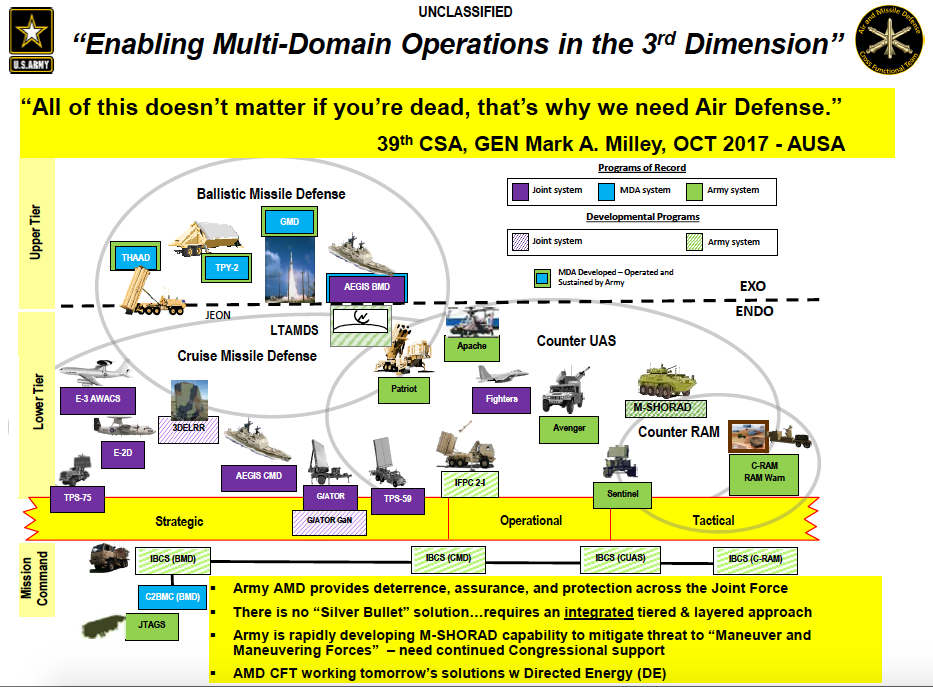
Overview of US air and missile defense efforts. SOURCE: Air & Missile Defense Cross Functional Team (AMD CFT)
Moving Fast
I didn’t catch McIntire while I was in Huntsville — that crazy CFT schedule again — but briefing the conference in his stead was his chief of staff, Col. William Darne (pronounced “Dar-NAY”).
“Most of our members are dual-hatted, (but) a week ago last Friday, I was able to shelve one of the two hats that I was wearing,” Darne told the Space & Missile Defense Symposium. “I’m no longer the TRADOC Capabilities Manager (TCM) for air and missile defense, I’m full-time as the Air & Missile Defense Cross Functional Team chief of staff.”
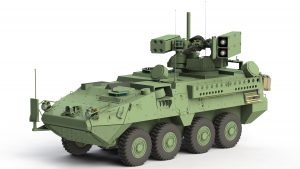
Anti-aircraft Stryker variant chosen by the US Army for its Maneuver Short-Range Air Defense (MSHORAD) mission: 4 Stinger missiles on one side, two Hellfires on the other, with a 30 mm autocannon (and 12.7 mm machinegun) in between (Leonardo DRS)
Getting a full-time director and chief of staff isn’t the only thing that’s changing at the AMD CFT, however. The team began life focused on battlefield anti-aircraft vehicles to defend frontline ground troops from Russian jets, gunships, and drones. Under orders from Chief of Staff Milley to speed up the Maneuver Short-Range Air Defense (MSHORAD) program, the CFT worked with fiefdoms across the Army to come up with a single list of requirements — ones realistically achievable in the near term, without a decade of development — that Gen. Milley signed off on in February, with prototypes to start testing early next year. The CFT helped move up the fielding of the first MSHORAD battery, mounted on 8×8 Stryker armored vehicles, by five years, from 2025 to 2022.
By contrast, the less mobile but longer-range complement to MSHORAD, the Indirect Fire Protection Capability (IFPC), wasn’t originally one of the CFT’s priority projects. But, acting as a kind of acquisition reform SWAT team, the CFT took IFPC on in late April to address “some challenges with the baseline program,” Darne said. IPFC had originally focused on developing missiles and lasers to shoot down incoming rockets, artillery shells, and mortar rounds (RAM), all common threats in counterinsurgencies like Afghanistan and Iraq, but, under congressional pressure, Army leaders had decided they wanted to take on Russian and Chinese cruise missiles and drones as well. They had also decided they wanted an interim IFPC in the field much faster — which, as my colleague Jen Judson reported, reversed the Army’s earlier position that there wouldn’t be an interim version.
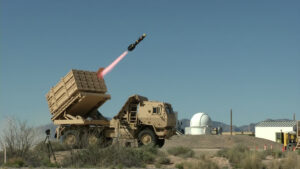
Army Indirect Fire Protection Capability (IPFC) Multi-Mission Launcher (MML) test-fires a Longbow Hellfire.
That interim might be an off-the-shelf system already in allied service. The House Armed Services Committee specifically suggested Israel’s Iron Dome, but that’s primarily a Counter-RAM system, although the Army is testing its Tamir interceptor in a counter-cruise-missile role. Meanwhile, what happens to the Army’s ongoing IFPC program? That’s to be determined, Darne said.
“The direction we are likely to head,” he said, “(is) to come up with an interim capability, something we can get very quickly out there to provide some capability, and then, meanwhile, also figuring out what we need to do with the program of record.”
That was no doubt unnerving news for everyone in the audience who works on the IFPC program. So was Rugen’s June announcement that the Army would now seek a new scout aircraft alongside or ahead of the long-planned Future Vertical Lift transport. (Click here for what Rugen told me about the Future Armed Reconnaissance Aircraft). And the CFTs for VR training and soldier equipment are cooperating to rush an actual piece of hardware, a fighter-pilot-style HUD for foot troops, into service this December.
But then, the mission of the Cross Functional Teams is precisely to unsettle the Army’s slow-moving status quo. The trick will be for the CFTs to take root as institutions without becoming part of the bureaucracy themselves.
Subscribe to our newsletter
Promotions, new products and sales. Directly to your inbox.

